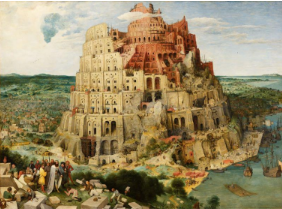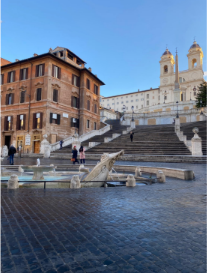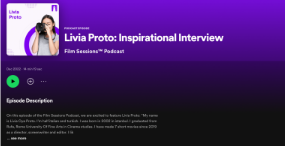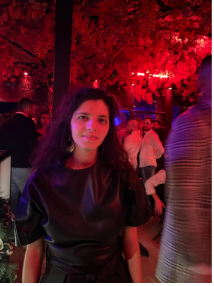“What I show in the film is even subdued compared to what
happened in reality. If I had tried to show things as they
really were, no one would have ever financed the film”
(Damien Chazelle)
Hello dear readers, I hope you are well, I was very impressed with Damien Chazelle’s new movie “Babylone”, which I watched in Rome a few days ago. I would like to share my movie analysis with you, my advice for those who haven’t seen the film yet is to read and find out about the history of cinema and then watch
the film to understand it better.
First of all let’s start with meaning the title “Babylone”; is derived from the Akkadian word babilu meaning “gate of god,” it is an evident counterfeit of God’s eternal city.The most famous city from ancient Mesopotamia. The setting of the movie is Los angeles, so we can say that LA is compared to an eternal city. The interpretation
of Damian Chazelle of why he has chosen this title is “The title Babylon is no coincidence, it evokes the vices, sins and vulgarities that characterised the industry of the time, which was also referred to with biblical references such as Sodom and Gomorrah. “1

Damien Chazelle managed to make a film after La La Land by putting together many genres together in a very nice way, meta cinema ( film about cinema itself) , semi-musical, comedy and drama as a sort of modern Pulp Fiction.
1 Esquire,
https://www.esquire.com/it/cultura/film/a42530169/babylon-film-damien-chazelle/
Sentence of Damian Chazelle “Anyone who has seen it has certainly recognized the influence of this city(Rome) and above all of works such as La dolce vita by Federico Fellini, which inspired me”.

We can say that there are also other inspirations of past movies like Sunset Boulevard of Billy Wilder, a representation of the silent cinema no longer in vogue where the actors of that era fall into depression till they commit suicides or go crazy.
The transition between silent and sound movies is very particular. We could see such differences; the actors had to memorise the sentences to say them outloud, they have to do many takes for a scene because at that time being at the dawn of this invention they did not look very professional, the actors had to be less theatrical with the movements and expressions and use a less strong tone.
The film can be divided into two parts. The first is the era of silent films as a comedy. Instead the second part with the cinema release of the first sound film (1927 “The Jazz Singer”) can be attributed to the dramatic genre also because after a few years of the sound movies there is an introduction of a new way of communication with the Hays Code in 1934. The Hays Code was this self-imposed industry set of guidelines for all the motion pictures that were released between 1934 and 1968. The code prohibited profanity, suggestive nudity, graphic or realistic violence, sexual persuasions and encouraged what the studios called “correct thinking.” Also the public image of the actors and actresses had to demonstrate themselves in a good way to the public and industry.
Margot Robbie has a very natural way of acting, she adapts very easily in these three eras from 1920’s to 50’s. The protagonist (Diego Calva) at the beginning does not fully emerge because he seems like an apparently secondary character but then he has a particular transformation arc of who would like to become someone in the
cinema industry. Little by little he succeeds, he manages to become one of the directors of sound cinema but is screwed over by his sense of too much love and sensitivity towards Margot Robbie which ruins his life. In fact at the beginning we think that the protagonist is Brad Pit because of his career position and his charm.
Brad Pit is the silent era movie protagonist, but when everything vanishes Film editor Tom Cross with his magical edit and post production creates a very dynamic, alive and fast atmosphere which is almost hypnotic.The final montage is fantastic, we all see an array of clips from iconic films in the history of cinema that brought us to our days. From the beginning Lumiere (The arrival Of The Train), Melies ( A Trip To The Moon), Oz movie and many others where at the end we see Avatar.
I would like to share with you the Podcast interview that festival director Mark Leschinsky did with me after my award at the Student World Impact Film Festival. I hope to hear your comments.
-https://open.spotify.com/episode/1I376fXXITIDmKp0r8gPbw?si=hRZxIm1nTrqfXsvP
0xak2A

-https://podcasts.apple.com/us/podcast/livia-proto-inspirational-interview/id16107960
13?i=1000591837041
Amazon Music
-https://music.amazon.com/podcasts/454cfd0f-31c5-4ff0-802f-73429a015ac6/episod
es/d7348a07-bc26-42d7-a79e-069df7f662da/film-sessions%E2%84%A2-podcast-livi
a-proto-inspirational-interview

I would appreciate your comments and
suggestions, hope to see you in my
next article, enjoy watching and
listening.
Instagram @livia.proto


